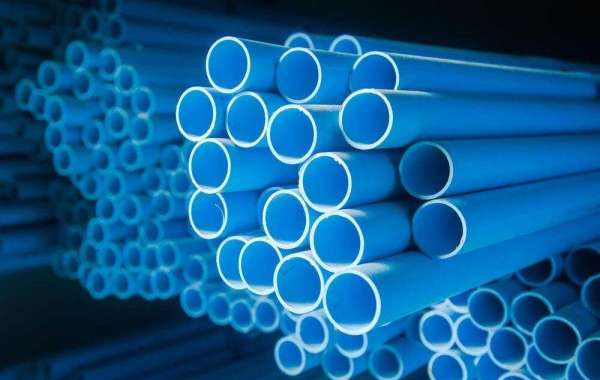What are PVC pipes?
PVC stands for polyvinyl chloride. It is a chlorinated hydrocarbon polymer. In its natural state, it is rigid and brittle. But when combined with additives such as plasticizers, it becomes more resilient and malleable.
Some of its applications are in electrical insulation, medical tubing, flooring, furniture, signage, and as a substitute for rubber. But its most widespread use is in manufacturing pipes used in water supply, plumbing, and irrigation.
Depending on the application, a few variants of PVC pipes are used as hot or cold water conduits in industrial as well as commercial contexts. PVC pipes have been used for over 80 years for various commercial purposes. In the United States alone, two million miles of PVC pipelines are functional today.
Also Read: why is abs pipe prohibited
What are PVC pipes used for?
PVC pipes are ubiquitous in the context of water supply. The pipelines used for water mains almost entirely consist of PVC pipes. Sanitation sewer networks and large-scale irrigation networks also comprise PVC pipes.
In the residential and commercial domain, PVC pipes are used in plumbing, drainage, agricultural irrigation, electricity telecommunications systems, and the ductwork of heating and cooling systems.
Underground PVC pipes have a larger bore and a thicker wall and are used by utility companies to supply drinking water through a network to residential and commercial buildings.
PVC pipe fittings like bends, branches, valves, brackets, and clips can be used in many pipelines and construction. They can be used to update older pipeline systems that could be worn out with age. The weakness of pipeline networks lies mainly in the integrity of their joints. PVC pipes can be used to reinforce the junction points so that the entire network will not have to be revamped.
Also Read: cast iron plumbing replacement cost
What are the advantages of PVC pipes?
- PVC pipes are the preferred media for transporting water and electricity in various sectors. Their high resistance to heat and corrosion are the main contributors to their extensive utilization.
- Owing to its smooth surface, there is a low level of friction between PVC and flowing liquids when compared to concrete and metal. This makes it a preferred material for pipes that are conduits for water supply.
- It is lightweight and easy to transport over large distances to be laid as pipelines. This means less fuel is used to transport them, making them eco-friendly.
- It is cost-effective since a relatively simple process is used for its mass production.
- It is easy to mold into different shapes, making it a versatile material with many applications.
- It is strong and durable and resistant to large amounts of stress. This makes it a suitable material for underground pipes and pipes through which pressurized fluids need to pass.
- An advantageous chemical property of PVC is its inertness or resistance to chemical reactions with other substances. This makes it safe for the transportation of drinking water and water that is used for household purposes.
Also Read: how to measure pvc pipe
What are the differences between PVC, CPVC, and uPVC?
PVC, in its original form, is brittle and rigid. It is primed for various commercial and industrial uses by adding additives. Plasticizers make it softer and more flexible. Heat stabilizers increase their resistance to high temperatures. UV stabilizers make it resistant to harsh and lengthy exposure to sunlight.
CPVC is a variant of PVC in which the chlorine content is boosted. It has a higher temperature resistance threshold. It can withstand temperatures of up to 200 F compared to PVC, which can handle up to 140 F before it melts or fails. For this reason, CPVC is preferred for the transportation of hot water in HVAC systems or industrial settings. Building codes mandate CPVC for this purpose in many cases.
uPVC is unplasticized PVC or PVC in its original form. Without softening additives, uPVC is brittle and rigid. Although this makes it unsuitable for pipes and other purposes that require flexibility, it has practical use in construction. It is resistant to prolonged exposure to sunlight and heat and is used as siding or weatherboarding material on several countries' exterior walls of homes.
Also Read: types of traps in plumbing
What Are PVC Pipes Made Of?
PVC pipes are made of polyvinyl chloride, a plastic that combines chlorine and ethylene. The finished product is a white or light-colored plastic that is rigid and durable. PVC pipes are used for various purposes, including water and wastewater conveyance, electrical wiring, and plumbing.
One of the benefits of PVC pipe is that it does not rust in contact with many common substances found in the environment, such as acids, bases, oils, and salts. This makes PVC an ideal material for use in underground systems where it may be exposed to these elements. Additionally, PVC is non-toxic and does not release harmful fumes when burned.
Also Read: what is the difference between pvc and cpvc







